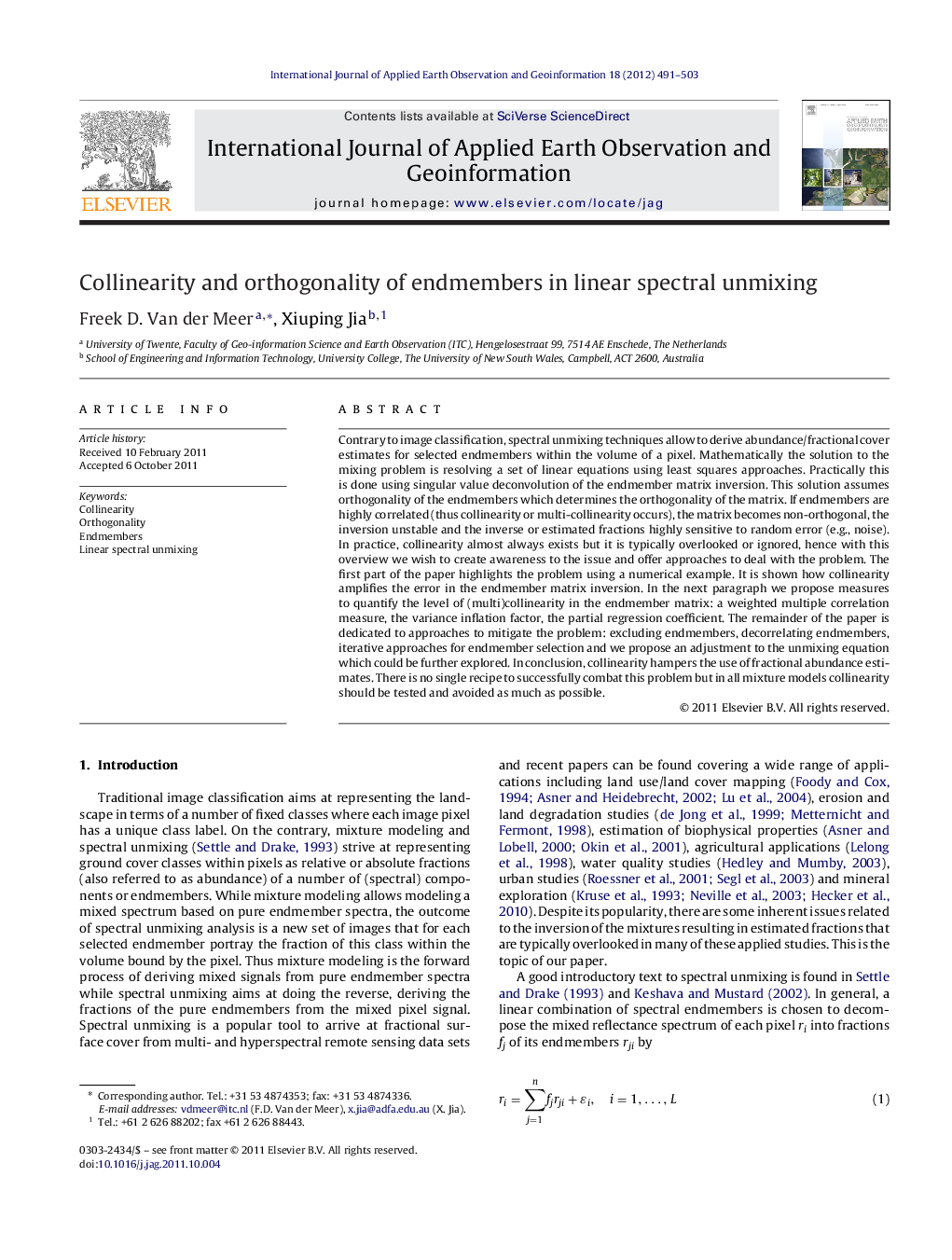| Article ID | Journal | Published Year | Pages | File Type |
|---|---|---|---|---|
| 4464951 | International Journal of Applied Earth Observation and Geoinformation | 2012 | 13 Pages |
Contrary to image classification, spectral unmixing techniques allow to derive abundance/fractional cover estimates for selected endmembers within the volume of a pixel. Mathematically the solution to the mixing problem is resolving a set of linear equations using least squares approaches. Practically this is done using singular value deconvolution of the endmember matrix inversion. This solution assumes orthogonality of the endmembers which determines the orthogonality of the matrix. If endmembers are highly correlated (thus collinearity or multi-collinearity occurs), the matrix becomes non-orthogonal, the inversion unstable and the inverse or estimated fractions highly sensitive to random error (e.g., noise). In practice, collinearity almost always exists but it is typically overlooked or ignored, hence with this overview we wish to create awareness to the issue and offer approaches to deal with the problem. The first part of the paper highlights the problem using a numerical example. It is shown how collinearity amplifies the error in the endmember matrix inversion. In the next paragraph we propose measures to quantify the level of (multi)collinearity in the endmember matrix: a weighted multiple correlation measure, the variance inflation factor, the partial regression coefficient. The remainder of the paper is dedicated to approaches to mitigate the problem: excluding endmembers, decorrelating endmembers, iterative approaches for endmember selection and we propose an adjustment to the unmixing equation which could be further explored. In conclusion, collinearity hampers the use of fractional abundance estimates. There is no single recipe to successfully combat this problem but in all mixture models collinearity should be tested and avoided as much as possible.
► Collinearity makes unmixing results unstable. ► The singular value is a measure for collinearity. ► The variance inflation factor is a measure for collinearity. ► Decorrelating endmembers improves collinearity. ► Iterative endmember selection improves collinearity.
